So you want to buy a sewing machine. I’m here to help push away the unnecessary marketing hype and dial you into the functions, features, and differences that matter. I’ll simplify the whole process of sewing machine buying, and help you prioritize the features that are right for you. So that you can choose your new sewing machine in the next 5 minuets.
I recommend that you download my “Sewing Machine Buying Guide Workbook”, using the form below. It’s the fastest way to find the sewing machine you want to buy. It even has spreadsheet with the most popular sewing machines and features. By the way, this post is not sponsored by EverSewn. I just happen to think their sewing machines are some of the best on the market for the price. If you don’t know how to sew yet, you might want to sign-up for notifications about my Zero-to-Sew course. It’s designed for the total beginner.
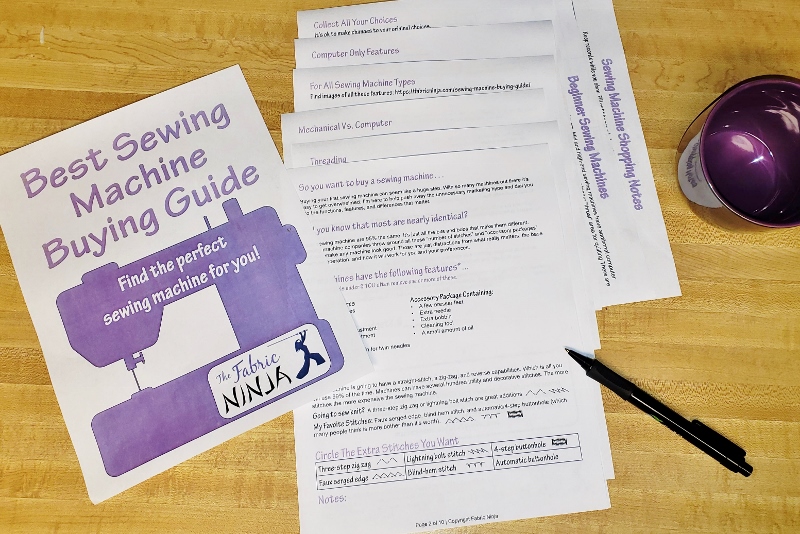
This post just touches the surface of information. If you want more, I have so much more that I want to tell you about sewing machines. Read the Best Sewing Machine Buying Guide for an in depth look.
Some of the links below are affiliate links, which means that if you choose to make a purchase, I may earn a commission. This commission comes at no additional cost to you.
Did you know that most sewing machines are nearly identical?
You don’t need to worry about what stitches each machine does, or what accessories each machine comes with. Sewing machine companies throw around all these “number of stitches” and “accessory packages” that can make any machine look good. Those are just distractions from what really matters, the base machine operation, and how it will work for you and your preferences.
Sewing Machine Types
Mechanical Sewing Machine
Mechanical sewing machines have dials and knobs that change the stitch type, length, and width. If you have any sort of technology phobia, I suggest that you get a mechanical sewing machine. You don’t need any more reasons or fears that will keep you from taking it out of the box.
Pros: No tech barrier – Quick learning curve – Fewer things to break – No software – Less expensive
Con: No convenience features
Favorite: EverSewn Sparrow 15 – No computer buttons or screens with a Front-Loading Bobbin
Computerized Sewing Machines
Computerized sewing machines come with computers, LCD screens, and buttons that are used to select the stitch type, width, and length. A computerized machine has convenience features like: needle up/down button, speed control, and automatic tie-off.
Pros: Great convenience features
Con: More expensive – Tech barrier – Learning curve – More things to break
Favorite: EverSewn Sparrow 25 – All the convenience features with a Drop-In Bobbin
Hybrid Sewing Machines
Some sewing machines are a weird hybrid. They start to incorporate computers, but only in minor ways. They have a tiny LCD screen just for selecting the stitch and have one or two convenience features. My two favorites are needle up/down and speed control.
Pros: Great convenience features – Less expensive than fully computerized – Low tech barrier
Con: More expensive than mechanical – Tech barrier – More things to break
Favorite: EverSewn Sparrow 20 – Many convenience features with a Drop-In Bobbin

Decision Time: What type machine do you want?
Want all the fun convenience features? Go with a computer model or hybrid.
Have any tech phobia? Go with the Mechanical.
Take a moment to write down your preference. You can download a worksheet to help you!
What’s Better?
Entry-level sewing machines are not just for beginners. Mid and high-end sewing machines have additional computer features or features specific to your fabric craft such as high-speed for drapes or bigger “throat” area for quilting.
My 4 Must Haves When Buying a Sewing Machine Are…
- Front-load bobbin
- Needle up/down button
- Auto Tie-off
- Free Arm
These are mine, but yours may be different.
Recommendations
There are many other entry-level machines on the market, these are just a sample. The links below are Amazon affiliate links. I may receive a commission for qualifying sales.
Entry Level – Mechanical $100-$300
- Second hand machine from dealership – Various
- Eversewn Sparrow 15: Free-Arm & Front-Load Bobbin, 32 Stitches – about $150
- Singer Heavy Duty: Free-Arm & Drop-in Bobbin, 32 Stitches – about $165
- Janome Magnolia 7318: Free-arm & Drop-in Bobbin, 18 Stitches – about $300
-
Entry Level – Computerized or Hybrid $150-$300
- Brother CS6000i: Speed Control, Needle Up/Down, Start/Stop, Free-Arm, Drop-in Bobbin, 60 Stitches- about $150
- Janome JW8100: Speed Control, Needle Up/Down, Start/Stop, Free-Arm, Drop-in Bobbin, 100 Stitches- about $210
- Sparrow 20: Speed Control, Needle Up/Down, Start/Stop, Free-Arm, Drop-in Bobbin, 80 Stitches – about $279
- Singer Quantum Stylist 9960: Speed Control, Needle Up/Down, Start/Stop, Free-Arm, Drop-in Bobbin, 600 Stitches – about $325
Entry Level – Computerized or Hybrid $300-$400
- Brother Designio DZ3000: Speed Control, Needle Up/Down, Start/Stop, Free-Arm, Drop-in Bobbin, 240 Stitches – about $310
- Sparrow 25: Speed Control, Needle Up/Down, Start/Stop, Free-Arm, Drop-in Bobbin, 197 Stitches – about $329
- Husqvarna Viking Emerald 118: Speed Control, Needle Up/Down, Free-Arm, Drop-in Bobbin, 18 Stitches -$399 from dealer with lessons and support. Only sold at dealerships.
- Husqvarna Viking Jade 20: Speed Control, Needle Up/Down, Start/Stop, Drop-in Bobbin, Large Throat space, 80 Stitches – Sold at Joann $399-$799 depending on the sale.
Do Better with Spreadsheets?
Download the, “Best Sewing Machine Buying Workbook”, using the form below. It includes a worksheet for picking the sewing machine features that you want, Sewing machine information spread sheet of the top 7 sewing machine features across 10 entry level sewing machines, and shopping worksheet.
Remember, Entry-level sewing machines are not just for beginners. Mid and high-end sewing machines have additional computer features or features specific to your fabric craft.
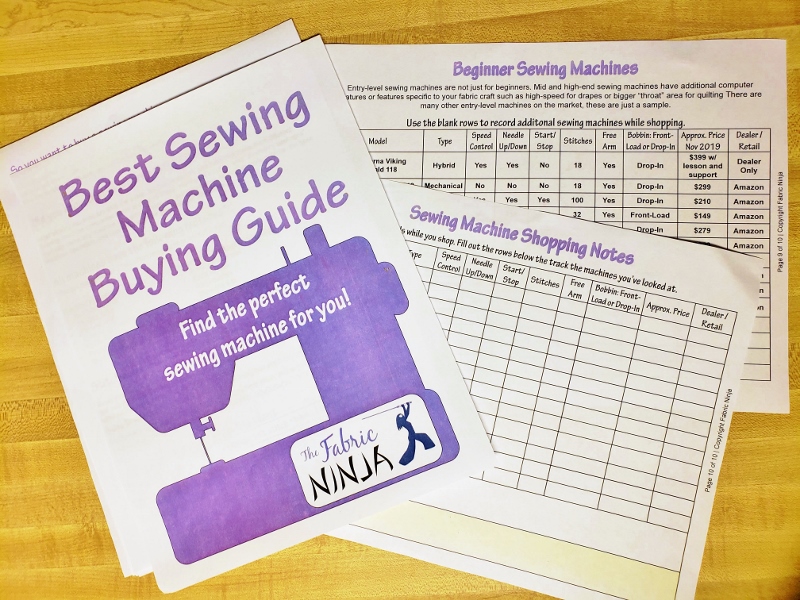
Don’t want to make a decision?
Go buy a Eversewn Sparrow 20 or 25. I’m pretty sure you will love it.
Was that too easy?
I have so much more I want to tell you about sewing machines. Read the Best Sewing Machine Buying Guide for an in depth look at all the features available.
Want to remember this? Pin this 5 Minute Sewing Machine Buying guide to Pinterest!
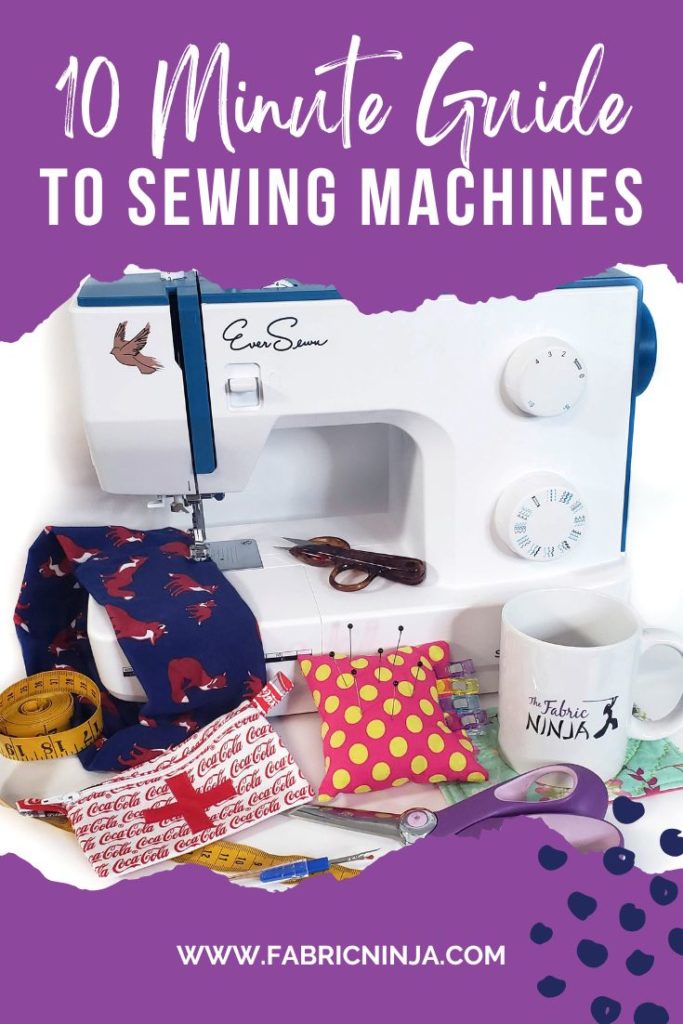
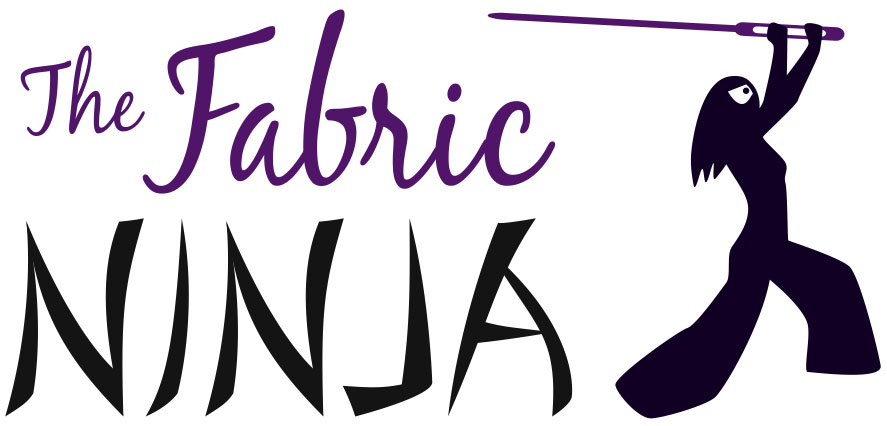
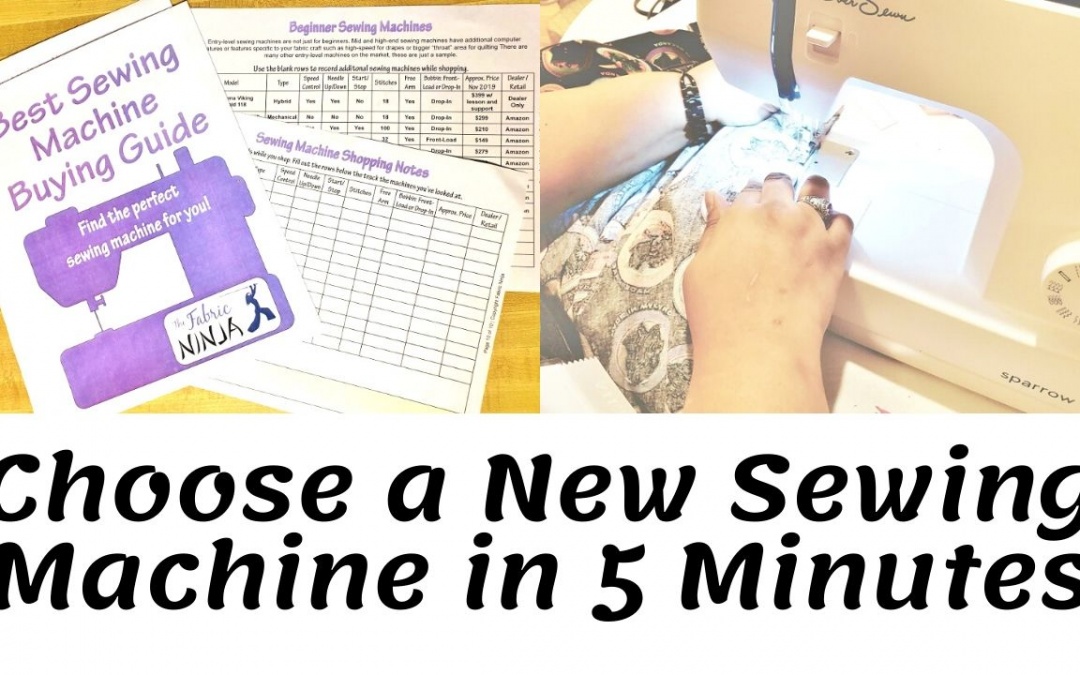
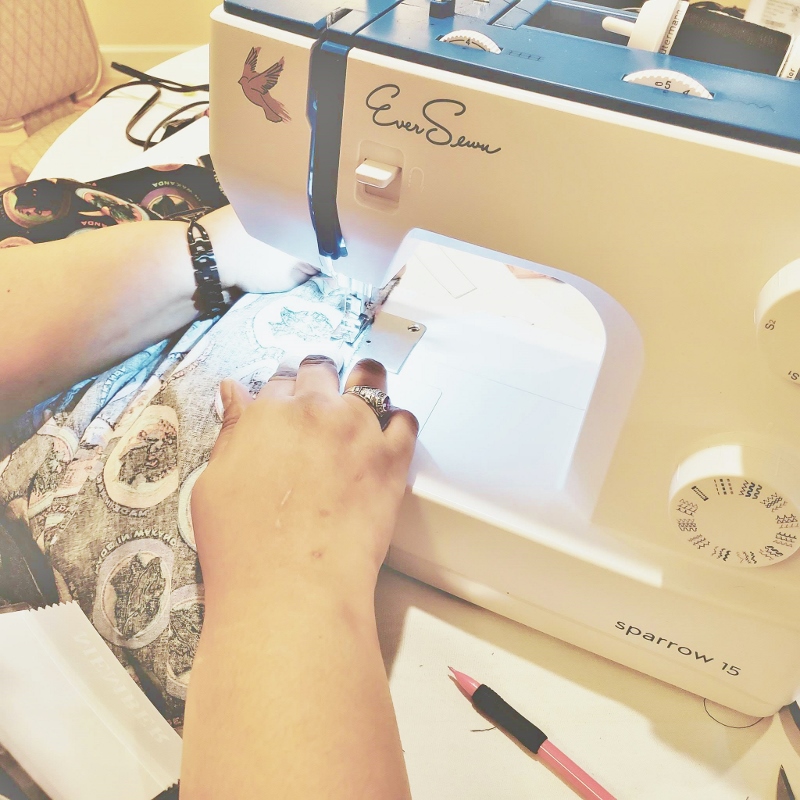

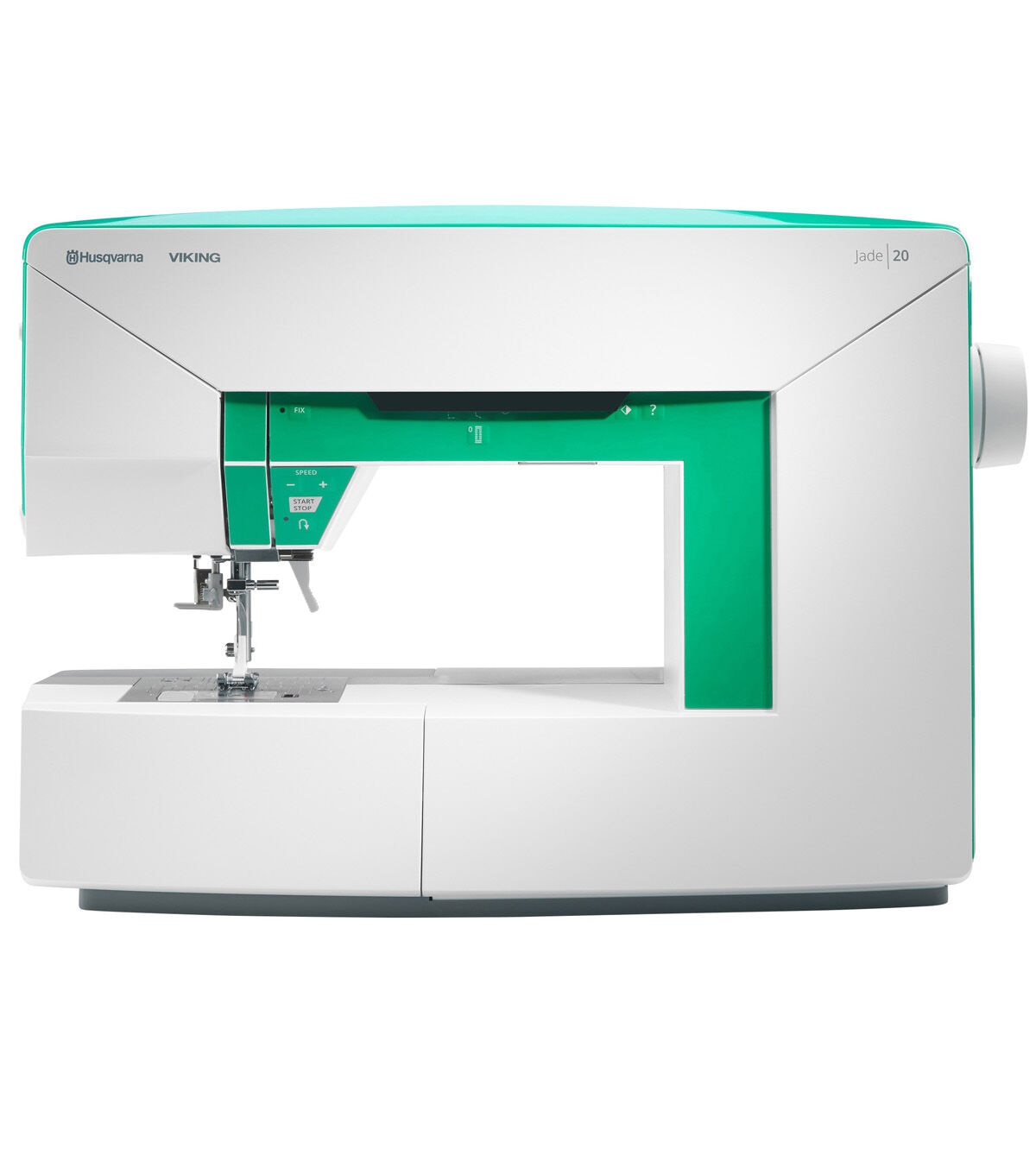
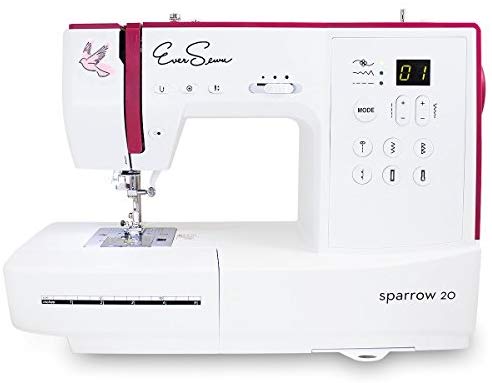
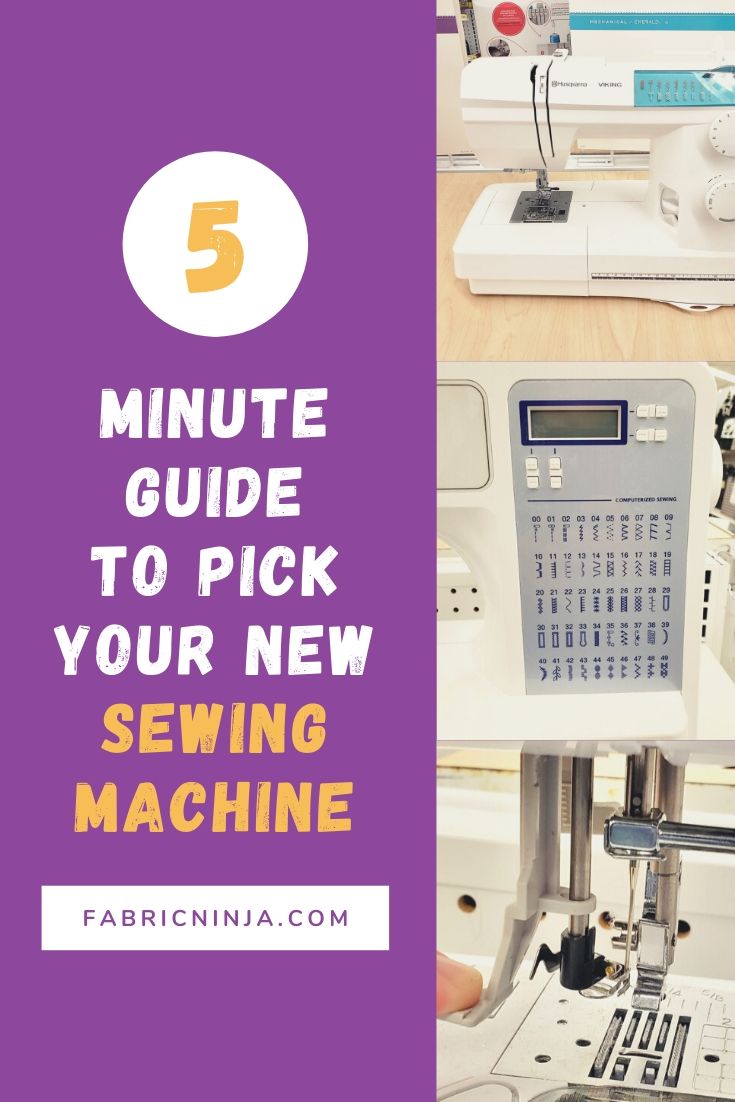
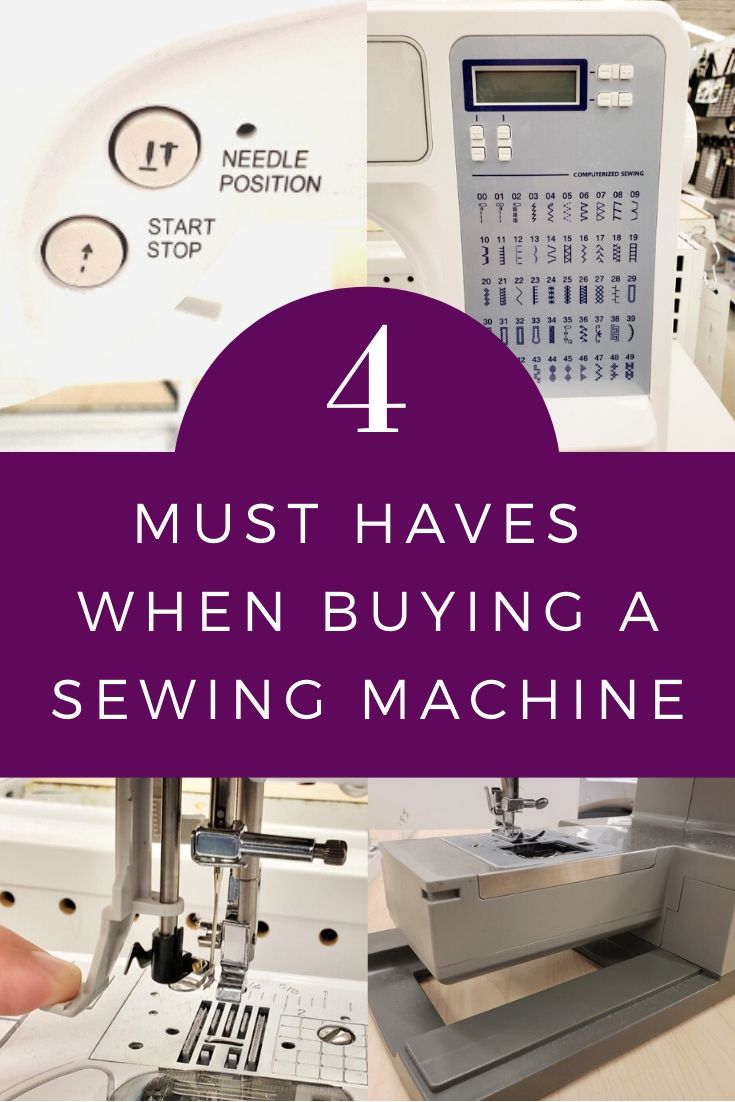
Have to say after having had 10-15 sewing machines (Bernina, Pfaff, Singer, Husqvarna Viking) , over the course of my 62 years, Brother is my favorite brand. These machines are super user friendly. Brother Quattro 6000D is the machine I’ve been using for about 10 years. It’s a combination sewing/embroidery machine.
Do you still stand by your Ever Sewn? I have been looking at them for awhile but reviews are a little too mixed for me. Is this the machine you use the most? I use my machines all the time. I’ve had a Pfaff 1475CD for 30 years and it’s just tired. I love my new Babylock Triumph serger
I still stand by the eversewn but it’s not the machine I use everyday. My everyday machine is a 7550. I have a class set of Eversewn Sparrow 15. They are perfect for teaching, but they are too slow for my everyday sewing. That being said if I were to purchase and eversewn as my next machine it would be one of the higher-end ones just because of the amount of sewing I do and I like the computerized features. Those probably go faster too
My sewing requires sewing magnetic buttons into small pockets. Have been experiencing a slowdown due to the fact that the magnets keep sticking to the metal base of the machine. Do you know any brand/model that is non metal especially the base ..
I have not seen a machine with out a metal throat plate, which is the part on the base near the needle. You might try a slip sheet over it, like teflon, or something thick that makes it hard to grab the metal. Lots machine have plastics bodies, but that part is always metal.
Ok thanks. Will try out your suggestion.
What do you suggest for sewing leather, vinyl, denim? I prefer those materials to use. They can get thick. I have 2 Husqvuarna Vikings. Any thoughts would be appreciated. Thanks.
Yes, those fabrics can be very thick. Most machines can handle garment weight leather, vinyl and denim provided that you are using the correct needle for the project. Using a size 16 or 18 needle will really help, plus thicker thread. A rolling foot, walking foot, or vinyl foot can also help. An industrial machine or a vintage all metal machine are your best bets, but as I said, most machines will be able to do it with the right support / needle.